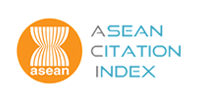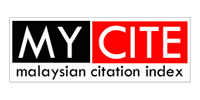Characterization of carbon black and graphite filled epoxy conductive ink via green solvent method
DOI:
https://doi.org/10.58915/ijneam.v18i2.2056Keywords:
Conductive ink, Epoxy, Carbon black, GraphiteAbstract
Conductive ink is gaining attention in the electronics industry due to its affordability, simplicity, and environmentally friendly properties. This study aimed to analyze a conductive ink made with Carbon Black (CB) and Graphite (G) as fillers, with epoxy resin as the binder and a green co-solvent of ethanol and distilled water. Various characterization techniques were used to examine the fillers. X-ray diffraction (XRD) revealed that CB exhibited an amorphous region at the (002) peak around 21.1°, while G showed distinct peaks at 26.5° and 54.4°, indicating a well-ordered graphitic structure. UV-Vis analysis showed that both CB and G interacted with the epoxy matrix, with an absorption peak in the 270-280 nm range corresponding to π–π* transitions. Fourier-transform infrared (FTIR) spectroscopy confirmed this interaction, with the presence of hydroxyl groups (2800–3500 cm⁻¹) and carboxyl group vibrations at 1241 cm⁻¹, indicating bonding between the polymer and filler. The dispersion of the fillers in the epoxy matrix was examined using Field Emission Scanning Electron Microscope (FESEM), which also assessed agglomeration. The ink's conductivity was tested according to ASTM F390 standards, with optimal CB loading at 4% achieving a conductivity of 4.49 × 10⁻⁵ S/m and optimal G loading at 3% yielding a conductivity of 7.14 × 10⁻⁵ S/m. These results indicate that G-based conductive ink with 3% loading performs better than CB-based ink for printed electronics applications.

















